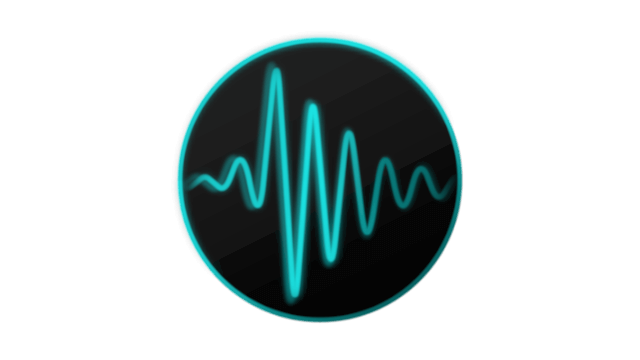
Martin Miller’s spectacular alternate picking technique is probably one of the most-discussed playing techniques we’ve filmed. And it was initially also one of the stealthiest, invisible not just to us but also to Martin himself. Wait, what?
Arpeggio Precision
Before we interviewed Martin the first time, we had seen a few clips of him playing impossible things, like the famous low-string arpeggios from Steve Morse’s tune “Tumeni Notes”:
But it was anyone’s guess what was happening under the hood to make this kind of inhuman accuracy possible. It just looked like – I don’t know, picking motion? That all changed when we met up. Within minutes of walking through the door of his Leipzig apartment, the unique motion of his index and thumb was suddenly and somehow strikingly obvious:
The Natural
Turns out, this was also news to Martin himself. Like many elite players, Martin learned how to do all this subtle mechanics engineering by feel, at some point in his teenage years, without conscious awareness of the movements involved. And that’s common to all the gifted players we interview. It’s not just that they can play extraordinary things — it’s that they learned the motions necessary for doing so entirely on their own, with nobody showing them how.
On closer examination, we both learned that Martin’s core technique is built around the kind of curved “double-escape” pickstroke found more often in bluegrass circles. The double escape is one of the four fundamental types of pickstrokes, which we’ve written about here before, and which we teach in instructional material like the Pickslanting Primer.
It’s this curved motion that allows Martin to execute one-note-per-string phrases at blazing speeds, without crashing into the surrounding strings:
The technique was so powerful that we made it the focus of our first feature on him.
As much as the existence of Martin’s unique motion was now clear to us, the exact source of its motion was not. Even close up, it’s hard to spot exactly which joints in Martin’s hand and forearm are moving. To make matters more complex, there is probably not just one version of the movement. Martin is aware of changes to both the motion and his grip which he makes semi-consciously when clicking into higher gear.
Mechanics Workshop
So when we finally got our new studio together, Martin was one of our first scheduled guests. We wanted to take a close-up look at his super-powered alternate picking motion with the goal of figuring out where exactly this motion comes from, and how we might begin to tackle learning it. You can find that conversation right here:
This was a super fun conversation on a subject that both Martin and Cracking the Code have had some time to think about by now. So how far did we get? That’s a matter of debate! But we definitely get a good look at exactly what’s going on. If you’ve seen our first two interviews with Martin, or spent any time trying to develop the motions he uses, then this conversation is a perfect complement to those efforts.
And as always when we sit down with Martin, his thoughts are wide-ranging, wise beyond the topic at hand, and a privilege to listen to.


Ok! Folks we are ready to go with a new conversation with Martin. The subject of this one is specifically Martin’s technique, with the express goal of figuring out exactly which motions he’s making, so that mere mortals like the rest of us can take a stab at learning this.
How far did we get? That’s up to you! We’ve got some very clear footage of what’s going on, and both Martin and I have had some time to think about this. So we came prepared with more targeted things to look at, like anchoring and grip. While we have definitely not boiled this down into an idiot-proof tutorial of the sort I believe should exist for all picking techniques, we are closer.
And regardless, it’s always fun to sit down with Martin because he’s a fellow nerd in the best way. And he plays guitar real nice too.
You can find the interview on the platform right here, tabs to follow in the next few days:
Not sure what you’re asking, but this interview is pretty similar to our others. The difference is that we can address the mechanical stuff more directly since Martin knows what they are. So in addition to the usual, hey play this lick, there’s more of the “hey, how is your hand moving” type of talk - from both of us. It’s two nerds fumbling toward understanding!
Spent a few hours on another pass at the audio and was able to pull up Martin’s mic in spots where the ducking cut it during the guitar playing. It’s a smoother watch now. It’s uploaded on the platform and downloadable as well. Let us know if you spot anything else.
Also, tablature is up and downloadable.
Thanks folks!
Just subscribed and view the new Martin material. It is awesome!!
Thnx a lot @Troy and @Brendan !
I was just watching the new video you put up. Excellent job!!!
https://www.youtube.com/watch?v=peHwqtnr-m0The slow-mo really shows that there is a lot more going on than I initially thought from the first video from 2-3 years ago.
There are lots of ways you can move your thumb and fingers, so I’m not sure which of those you’re referring to specifically, but in general, yes, Martin’s technique is primarily a thumb-index technique. In particular, the MP joint of the index finger, where the index connects to the palm, sees a lot of action in lifting the index up during the downstroke. This was the subject of our first feature on Martin:
https://www.youtube.com/watch?v=0MVXbCzAV7QMartin was not aware he was making this movement at the time, but it’s a few years later now, and since then he’s more aware of it. The purpose of this most recent conversation was to try and figure out more specifically which joints are moving, and how the rest of us might try and learn it.
As others have pointed out, the reason this works with the anchored hand is that the fingers can still move a little even with one side of the palm stuck to the strings. That is not the case for all picking motions, and just to take one example, wrist motions need more freedom than that.
Don’t count out elbow motion. The great Doc Watson appeared to use a combination of elbow and wrist to do arpeggio picking, and Doc is a legend. @Bill_hall here on the forum is also a great elbow picker, and he does some 1nps stuff as well. I don’t know for sure but my guess is it’s probably also a combination of elbow and wrist. Or maybe elbow and forearm. Bill will be stopping by the studio this coming year and we’ll do what we did with Martin — try to figure out how it all works!